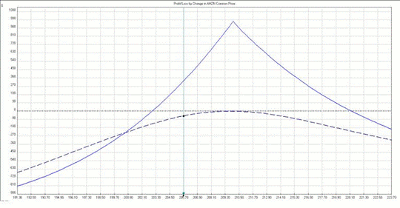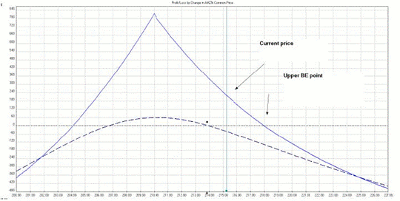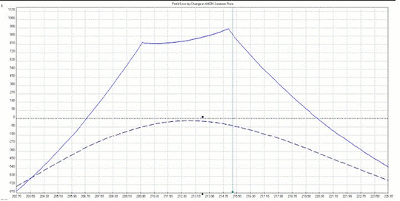Trader JW Jones explains why the “hit and run” calendar spread using weekly options is a preferred way to earn sizable returns while still controlling risk in volatile market conditions.
“It was the best of times, it was the worst of times, it was the age of wisdom, it was the age of foolishness, it was the epoch of belief, it was the epoch of incredulity, it was the season of Light, it was the season of Darkness, it was the spring of hope, it was the winter of despair, we had everything before us, we had nothing before us, we were all going direct to heaven, we were all going direct the other way…” Charles Dickens, A Tale of Two Cities
The recent neck-snapping volatility in the markets has reminded me of this classic quote from Charles Dickens. Many traders would certainly agree, and their trading accounts would attest, that we have glimpsed the worst of times. However, for derivatives traders using option strategies, the opportunities have never been better.
The factors which combine to define the world of the modern derivatives trader include: inexpensive and robust analytic software, deeply discounted commissions, easy-to-use trading platforms, tremendously liquid option chains in many diverse underlying assets, the availability of rapidly decaying weekly options, and blazingly fast communication capabilities. As a result of these factors, trading opportunities present themselves almost continuously.
One of the problems created by this plethora of opportunities is the fog of data overload. It is stunningly easy to lose focus and end up watching potentially profitable trades pass by.
I find it easiest to focus on the issues for which weekly options are available. The options exchanges routinely review the list of available weekly options, and the list therefore represents the most liquid and active issues on the various option exchanges. An Excel spreadsheet containing updated listed weekly options can be downloaded from the CBOE Web site.
See related: 4 Tips for Trading Weekly Options
One of the new opportunities presented by the arrival of these recently available weekly options is the ability to trade what I call “hit and run” calendar spreads. Remember that a calendar spread is a two-legged spread constructed by selling a shorter-dated option and buying a longer-dated option. The profit engine is the relatively faster decay of time premium in the shorter-dated option.
Calendar spreads reliably achieve their maximum profitability at the expiration Friday afternoon of the short leg when price of the underlying is at the strike price. Prior to the recent availability of these weekly options, calendar spreads were typically constructed with around 30 days to expiration in the short leg.
In these classically constructed calendars, risks are two-fold:
- Movement of price of the underlying beyond the limits of profitability
- Volatility crush of the longer-dated option which the trader owns
Hit and run calendars differ in risk somewhat. Volatility moves rarely occur at anywhere close to the rapid pace of price movement. Because of this characteristic, the primary risk in these short-duration calendars is price of the underlying. The occasional occurrence of spiked volatility in the short option significantly increases the probability of profitability, as the elevated volatility decays to zero at expiration.
NEXT: See Real Market Example of "Hit and Run" Calendar Spread
|pagebreak|One of the very liquid underlyings that has actively traded options is Amazon.com (AMZN). At midday on August 29, AMZN was at $205.50 and continuing to trend higher from a basing pattern. A quick look at the options board showed that the weekly 210-strike option, which had four days of life left and consisted entirely of time (extrinsic) premium, was trading at a volatility of 42.9%, while the September monthly option I would buy had a volatility of 41.6%.
This situation is called a positive volatility skew and increases the probability of a successful trade. I entered the trade and owned the resulting P&L graph:
I continued to monitor the price, knowing that movement beyond the bounds of my range of profitability would necessitate action. By midday on August 31, 48 hours into the trade, the upper limit of profitability was being approached, as shown below:
Because price action remained strong and the upper breakeven point was threatened, I chose to add an additional calendar spread to form a double calendar. This action required commitment of additional capital and resulted in raising the upper breakeven point from 218 to a little over 220, as shown below.
Hit and run calendars must be aggressively managed; there is no time to recover from unexpected price movement.
Shortly after adding the additional calendar spread, AMZN retraced some of its recent run up and neither breakeven point of the calendar was threatened. I closed the trade late Friday afternoon. The indication to exit the trade was the erosion of the time premium of the options I was short to minimal levels.
The results of the trade were a return of 67.5% on maximum allowable managed capital risk and a return of 10.6% on committed capital. If the second calendar had not been needed to control risk, the returns would have been substantially higher.
This is just one example of the use of options in a structured position to control capital risk and return significant profit with minimal position management. Such opportunities routinely exist for the knowledgeable options trader.
By JW Jones of Options Trading Signals
























